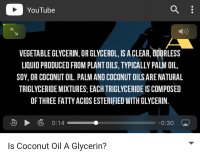Mito
Member
- Joined
- Dec 10, 2016
- Messages
- 2,554
The Bulletproof guy claims his MCT products don’t use hexane or any solvents but he implies cheaper brands do use some kind of solvent.Wasn't there talk about hexane in MCT oil? Or was that in refined coconut oil?
“We thought it was just an individual tolerance issue, but I soon discovered that it was an oil purity issue.
The reason purity matters is that C17 is a byproduct of other MCT oil production processes, and it, along with C6, is a major cause of disaster pants and irritation. There’s a reason that some MCTs cause problems when the same amount of Bulletproof XCT or Brain Octane won’t.
That’s why the unique process we use at Bulletproof is completely chemical and solvent-free. Most MCT’s on the market are manufactured via chemical/solvent refining, which can require using chemicals like hexane and different enzymes and combustion chemicals, such as sodium methoxide. The oils used to make MCTs – palm and coconut – are often solvent extracted too, but not Bulletproof.
We never allow solvents anywhere near our process. We use triple steam distillation in a non-oxygen atmosphere to avoid lipid oxidation and create a purer process. And we do it 100% in the United States. To my knowledge, no other company uses such extensive distillation to ensure purity, simply because solvents and catalysts are cheaper.”
https://blog.bulletproof.com/what-is-mct-oil-vs-coconut-oil/


